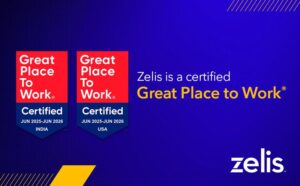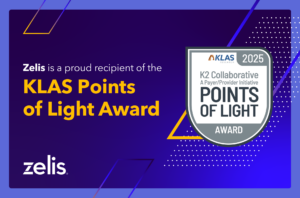The quality of the digital services—and online experiences—delivered by healthcare payers is growing in importance for members and providers alike. But even as digital transformation makes it possible for payers to deliver efficient, streamlined online experiences to stakeholders across the value chain, most continue to fall short. In fact, members report that neither providers nor payers are regularly meeting their expectations for personalization, efficiency or eliminating wasted effort in their interactions across digital channels.
Perhaps nowhere is this more true than in the arena of consolidated payments and communications. Zelis recently partnered with Healthcare Dive to survey over 300 executives and decision-makers in payer organizations about the current state of their digital (and analog) payment infrastructures. The results reveal that most payer organizations struggle with the consequences of having built out digital payment infrastructures over time and in piecemeal fashion. Most of these payment infrastructures are overly complex, involving large numbers of vendors and incorporating outdated legacy components. The end result is that payers confront technology bloat, interoperability issues and security concerns. All too often, they’re challenged to meet regulatory compliance mandates, too.
Today’s payer organizations face common obstacles
Many of the difficulties that survey participants reported were widely shared among them. Particularly pervasive were struggles with infrastructure management complexity and a lack of visibility. Nearly half of the respondents (49%) said that managing their organization’s payment infrastructure was too time-consuming, while 48% were troubled by a lack of visibility into the payment infrastructure’s performance, and 45% didn’t have adequate visibility into payment flows.
The survey demonstrated that most decision-makers within payer organizations are broadly aware of the consequences of maintaining inefficient payment infrastructures. Nearly three-quarters of respondents (74%) generally agreed that their organization’s reliance on legacy payment platforms was increasing its risk exposure when it comes to regulatory fines and penalties. A large majority (67%) generally agreed that their organization’s reliance on legacy payment platforms was inhibiting efficiency, and almost as many respondents (62%) generally agreed that their organization’s payment technology stack had become a liability for the company.
Adopting a holistic consolidated platform removes challenges
Modernizing payments and communications infrastructures by adopting a single, consolidated platform to perform these interrelated tasks solves multiple problems for payer organizations. It decreases fraud and compliance risks at the same time that it removes friction, improving provider and member experiences while streamlining operational workflows.
Executives and key decision-makers in payer organizations understand these key benefits. As many as 85% of survey participants generally agreed that they would prefer a single-vendor solution that consolidates payments and communications within a holistic platform. In addition, payer organizations are budgeting for technology upgrades. A full 79% of respondents said that their organization planned to increase its annual payment technology budget within the next three years.
Respondents also listed a number of top priorities that are driving their organizations towards digital payment platform adoption. These include:
- improving the efficiency of revenue cycle workflows (listed as a very or extremely high priority by 79% of survey participants)
- lowering costs (also listed as a very or extremely high priority by 79% of survey participants)
- increasing check accuracy (listed as a very or extremely high priority by 78% of survey participants)
- improving member experience by offering multiple payment options, both paper and electronic (listed as a very or extremely high priority by 77% of survey participants)
- automating the process of matching EOBs/EOPs with payments (listed as a very or extremely high priority by 76% of survey participants)
What to look for in a payment solution
Stakeholders in payer organizations are increasingly aware that adopting a comprehensive, integrated payment solution can help them reduce costs and risks, all while easing their management burden and giving members, providers and even employees better experiences.
A platform like the Zelis Advanced Payments Platform (ZAPP) gives payers a powerful way to manage both payments and communications, protecting data by securely storing it within a single system of record, supporting omnichannel payments and engagement and real-time information exchange, and reducing errors and inaccuracies. This can drive better service and performance across all areas of a payer’s financial operations. When systems are simpler and easier to use, the number of successful transactions—and satisfied members—will continue to rise.
To learn more about what this looks like in practice, download this research report or connect with one of our experts today.



